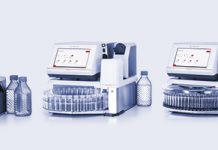Since the early days of the EU Biocidal Products Directive (BPD) and now the EU Biocides Product Regulation (BPR) one thing has been clear:
In order to stay on the European market, biocidal products must have an authorisation in accordance with the harmonised requirements. In other words: No authorisation – no market.
Manufacturers of biocidal products are, however, a very diversified group of industries. Consequently, the full impact of the regulatory pressure in terms of deadlines, workload and costs has been perceived very differently from industry to industry.
Requirements to the disinfection industry then and now
One industry feeling the regulatory pressure right now is the disinfection industry covering healthcare, food and feed, veterinary hygiene and private hygiene. For a long time, this industry did not have to comply with the harmonised rules since the work was heavily delayed within the EU. Furthermore, before harmonisation of the rules, most EU countries had very few regulatory requirements, mostly in the form of minor notification schemes or similar. As a result, disinfection manufacturers were used to easy market access.
But with application deadlines for product authorisations approaching, the industry has been forced to take action in order not to lose market access. This is a major shift in requirements and workload, and the impact on the industry and the market is starting to show. Of course, it goes without saying that fewer products will be authorised and fewer market players will be left due to the cost-intensive burden on the industry.
Why an authorisation application is such a huge task
The data and documentation requirements for authorisation of biocidal products are based mainly on the exhaustive requirements known from the pesticides and pharmaceutical regimes. This is why preparing an application for an authorisation is so demanding. The applicant needs to have a full set of data for the biocidal product. This includes data on physical and chemical properties, analytical data, efficacy data, toxicological data, eco toxicity and fate data. Much of this data does not exist as there were no such previous requirements for disinfectants. As a result, the data must be generated from scratch – and within a short time span.
On top of the data requirements, applicants must prepare high-quality exposure and risk assessments for human health and environmental impacts. These assessments require highly skilled personnel. In addition, the EU requires applicants to report data and risk assessments in specific expert formats such as the IUCLID (known from REACH), the SPC (summary of product characteristics) and the PAR (product assessment report).
In short, applicants must possess skills and resources in analytical chemistry, efficacy, toxicity and eco toxicity to prepare successful biocidal products applications.
Facts about the DHI biocidal team
We offer regulatory and documentation assistance to industry and authorities:
• consortia management for BPR authorisation
• preparation of dossiers on biocidal active substances, biocidal products and biocidal product families
• exposure and risk assessment of active substances and biocidal products
• data search, data gap analyses, testing strategies
• toxicological and eco toxicological evaluations
• phrasing of claims, notifications and expert reports
Michael Fink
Michael Fink is the biocidal regulatory expert at DHI specialised in the BPR and associated regulations. As part of the biocides team at DHI, he has supported industry in obtaining authorisations of insecticides, disinfectants, antifouling products and preservatives. Recently, he has successfully supported clients that work with in situ generated biocidal active substances to obtain cost-efficient authorisations. Michael has profound experience in performing toxicological risk assessments, human exposure scenarios and efficacy for dossiers on biocides on behalf of authorities and industry. In addition, his experience includes management of industry consortia and he is highly skilled in communicating with ECHA and member states competent authorities.









